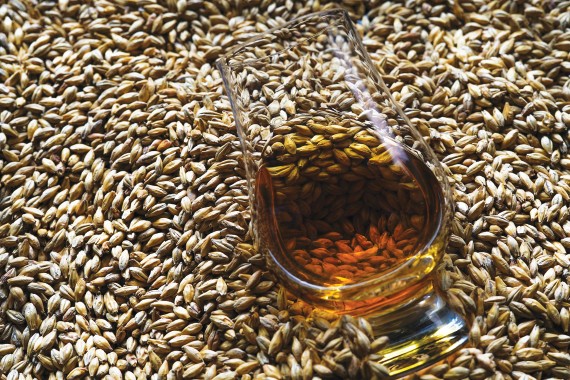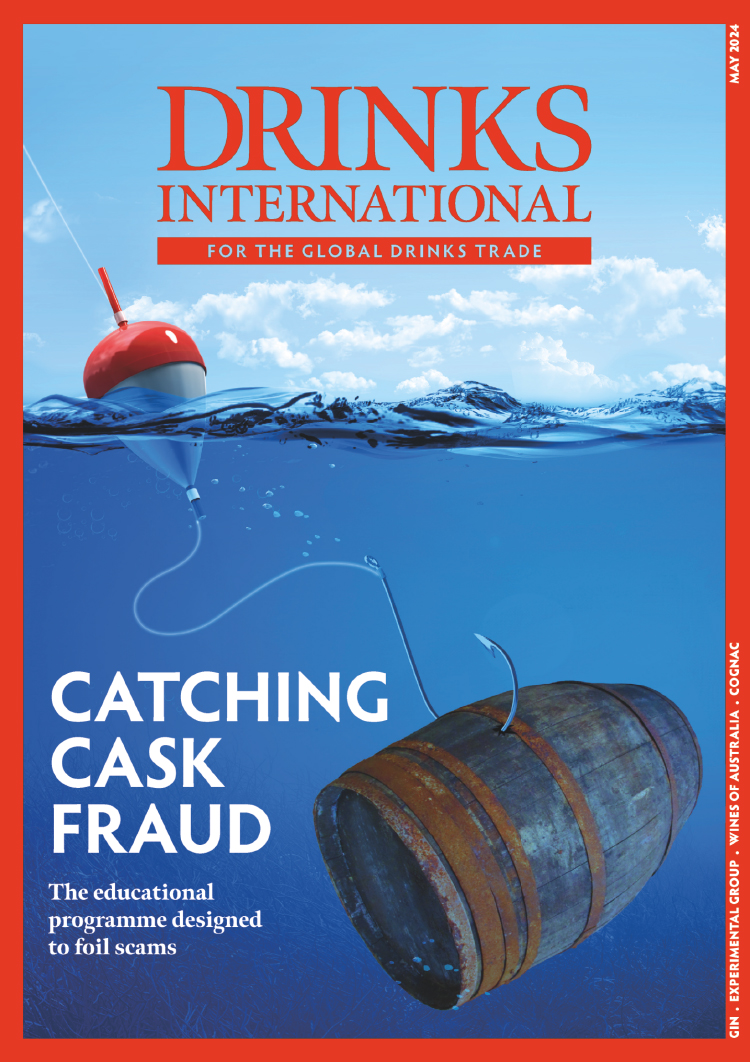The US is familiar with Irish whiskey. It’s the largest market for the spirit and 2022 saw the country account for almost 40% of global consumption volumes, according to IWSR Drinks Market Analysis. But for many elsewhere, the category may not be at the forefront of consumers’ minds.
In 2014 a Geographical Indication (GI) was introduced stating that single pot still Irish whiskey must be made up of both malted and unmalted barley with a maximum 5% of the mash bill containing a different unmalted grain. But this GI doesn’t bear much meaning for the consumer, at least not in the same way the words ʻsingle malt’ do – a term that is generally synonymous with Scotch whisky.
Mark McLaughlin, director of Irish whiskey for The Dead Rabbit, says: “One thing about pot still Irish whiskey is that it is completely misunderstood globally – no one really knows what it is.
“I think that as a category we should do a better job of explaining what pot still is – we need to create a simpler message. If you look at malt whiskey in Ireland it is potentially the thing that could grow the most. Single malt is recognised with quality around the world,” adds McLaughlin.
With Irish whiskey evolving, it’s not just the likes of Scotland, for example, that focus on barley in their distillates. Ireland is seeing an increased use of the grain as a standalone ingredient, with companies such as Waterford Distillery utilising the flavour it produces and championing barley as an ingredient for the future of Irish whiskey.
The lack of consumer awareness and confusion it can bring when it comes to labelling is present throughout the category, with Waterford Distillery founder Mark Reynier saying there’s a “deliberate confusion between single pot and single malt, people try to hang on to this ʻsingle’”.
He continues: “For me, pot still is an inanimate copper object that is used to make single malt whisky, but in Ireland it’s been used to create a category of whiskey, inferring malted and unmalted. Pot still as a title I get, but I don’t think it’s terribly helpful. Single malt yes, but do people necessarily associate that with the fact that it’s malted barley? I think the terms we use are either deliberately or less-so confusing to the consumer.”
Using the single malt approach, Reynier focuses on flavour in the Waterford portfolio, with barley as a key driving force. “I’m firmly of the belief that you start at the beginning, you start with where whiskey’s flavour comes from and that’s from barley – we use it by law.
“The question is, where does the flavour of your whiskey come from? Is it a sort of last-minute, lipstick on a pig correction or is it fundamentally part of the process of the production? I think it’s become rather confused over recent years,” Reynier adds.
Waterford, unlike many Irish whiskey distilleries, doesn’t produce pot still. Reynier says: “That extraordinary appropriation of an inanimate object into a category when it comes to naming, whiskey does get away with murder sometimes. I think pot still as a category, ie a mixed mash of malted, unmalted, extra grain – it’s not where I’m at, it’s not what I’m doing. I’m only interested in barley. Barley for me is where it’s at and that’s really my focus.”
Varied expressions
With barley being a key provider of flavour, many producers argue the future of the category is to lean into pot still and use it to create varied expressions. The industry’s argument, according to McLaughlin, is that the whole point of pot still is that it isn’t consistent, but: “There are very different flavour profiles because of the recipes distillers decide to make, so that could make the category incredibly exciting, but I don’t think that’s going to happen in 2024.”
Garrett Pitcher, Church of Oak Distillery managing director, adds: “We are unique in the sense that we make a range of whiskey styles. We make pot still, single malt, rye and we make our own sour mash and oat whiskey. Using multiple grains we’re able to make all these different distillate styles.
“Irish whiskey is almost like the youngest, oldest category in the world. In a way, I think it may not find its voice for another five to 10 years. The history of pot still is more than malt whiskey. I think we’re going to see a lot of this mixed mash bill coming through.”
Pitcher notes that Irish whiskey as a category is “uniquely placed to bring diversity to whiskey” with Church of Oak in “pursuit of flavour and the possibilities of flavour”.
As the category looks to freshen things up, Drinksology Kirker Greer co-founder Richard Ryan notes Irish whiskey is “experiencing a renaissance”. One of the trends fuelling this, as Ryan continues, is the increased experimentation with mash bills. “This kind of experimentation not only resonates with our historical roots, but also caters to the tastes of our most important non-domestic market, the US. Here, there’s already a strong appreciation for grain profiling across a diverse range of grains in American whiskeys.”
When it comes to the question of flavour in Irish whiskey, Ryan adds some distilleries and brands are “relying on third-party liquid from a very small number of supply distilleries. To create differentiation, many are turning to the practice of finishing".
He continues: “This trend has led to the emergence of a sub-industry focused on cask supply, storage and cask management, and with that the flood gates of creativity have opened.”
With the current legislation, and considering if anything should be introduced or removed, McLaughlin adds: “We’re in a really good place in terms of the [wide range of] wood and casks [that can be used] as a key differentiator, so I would hate to see that removed. It is something that I would definitely try to protect because it’s a key point of difference for us compared with Scotland, and it’s never going to happen on a huge scale, but it definitely does offer a different flavour profile.”
The recent focus on finishing, while driving the category to look to more interesting profiles sparks questions for some. Reynier notes that Waterford is looking to show the whiskey in its most natural form. He says: “As far as Waterford is concerned, we’re making the most naturally flavoursome whiskey that you can, concentrating on barley and focusing on the start rather than the finish.
“Wood is very important in the maturation of those natural flavours. I think the malt whiskey consumer is starting to look for authenticity,” Reynier adds. While this works for Waterford’s terroir-driven approach, the debate on how to class innovation remains. “By bringing together single farms into the cuvée concept and bringing together individual terroir-derived flavours to create something more complex than you would do otherwise, is that innovation?” Reynier asks.
However, some producers are finding innovation lies with the possibilities of the pot still as McLaughlin adds that if the pot still GI changes, it will make the whole category “much more interesting from a flavour perspective”. He elaborates: “It will make pot still potentially the most flavour-forward style of whiskey in the world and have the most variants in terms of flavour, especially if you take into consideration double distillation and triple distillation.”
Expanding reach
With all this talk of innovation and brands seeking to pave the way for a new era of Irish whiskey, it’s opened the category up to new markets and potential growth globally. After the US, the second and third largest markets for Irish whiskey are Ireland and the UK, according to IWSR. But McLaughlin notes: “We’re seeing markets such as South Africa really shooting off. Japan is growing for one or two brands, but it’s opening a new door for Irish whiskey. China’s still untapped and the Middle East is relatively untapped as well.
“You’ve got a lot of huge opportunities that aren’t the traditional opportunity of the US. I think the important thing is that we start to see differentiation across Irish whiskey to give a wider scope of consumers a chance to introduce themselves to Irish whiskey based on flavour or modernity of brands,” McLaughlin continues.
McLaughlin has also seen Nigerian and South African bars driving growth in their respective countries, due largely to bottle service in Nigeria and South African bar culture premiumising.
Church of Oak, too, has seen the growth for Irish whiskey in Africa, with India and the rest of Asia seeing a significant market share, as Pitcher adds “the future of Irish whiskey will be truly global”.
And it’s not just new markets – the category is seeing new distilleries crop up, with McLaughlin suggesting Irish whiskey is expecting four or five more distilleries to arrive in the next year. This, he says, makes it a “much more exciting category, cutting through the confusion of all these third party sourced brands, making it easier for people who are ambassadors for the industry to explain what’s going on in Irish whiskey.”
With this, Pitcher has found new demographics and bonders and bottlers entering Irish whiskey. As an “approachable” whiskey, Pitcher adds brands are orienting themselves to RTDs and cocktails due to the flavour-forward nature of the category, along with attracting more female drinkers looking to explore whiskey.
“We believe the future of flavour is multigrain – it has been done before in Irish whiskey, we’re just bringing it back. I think we can manipulate flavour and we can create flavour profiles, whether it be towards a cocktail or RTD,” Pitcher continues.
With singles, malt and pot still driving the category and putting flavour at the helm, Irish whiskey is well positioned and equipped to assert itself in the global whisky scene. McLaughlin adds there’s room for modernity to come in. “Ireland has a job to do for these modern brands to come to the fore to open doors to new consumers,” he says. “It’s riding a wave. There are going to be slower years but hopefully the industry can keep evolving. We still have a long way to go as Scotch is miles ahead of us.”




